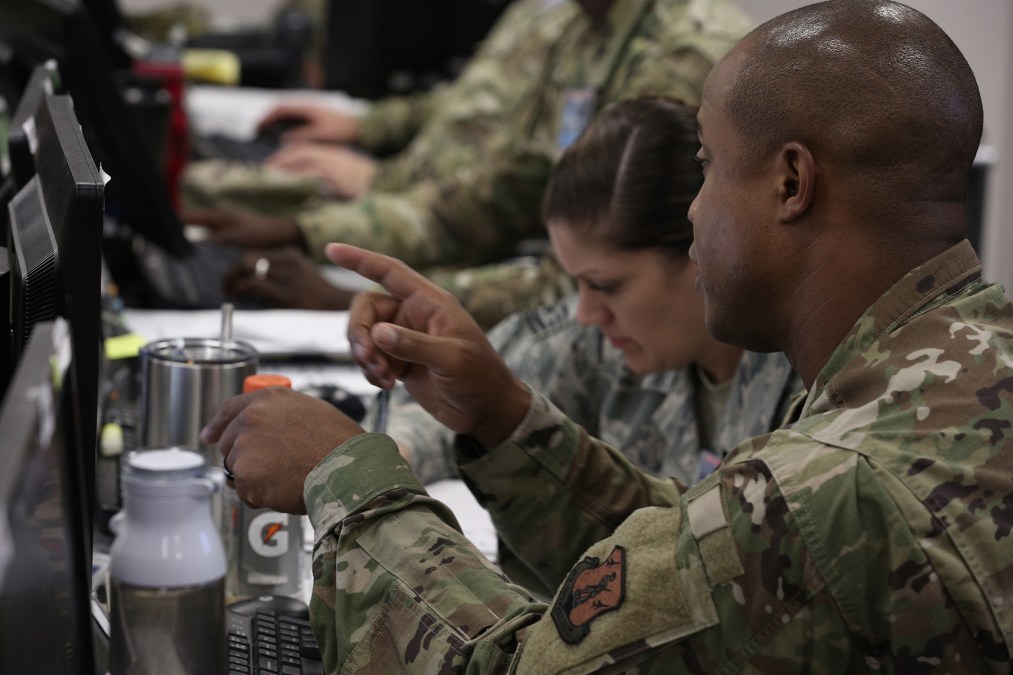Cyber Command moving toward an integrated information warfare approach

U.S. Cyber Command is looking to more tightly link cyberspace “effects” operations with information operations, according to its deputy commander.
When asked where he sees the command headed in the next five to 10 years, Lt. Gen. Charles Moore said he hopes it will broaden the concept of a “truly synchronized and integrated information warfare approach.”
“Without a doubt, what we have learned is that cyber effects operations in … more of a combined arms approach with what we call traditionally information operations, is an extremely powerful tool,” he said Thursday at Cybercom’s legal conference.
Cybercom has reportedly begun engaging in some level of combined operations along these lines. It has been reported that the command has sent messages to Russian cyber operatives letting them know the U.S. military knows who they are and what they’re doing as a means of deterring their potential future malicious activity aimed against the U.S.
Many of the organization’s subordinate commands have taken on a larger role in info warfare for their respective services, reorganizing and consolidating similar capabilities to provide an integrated approach.
Former officials have pushed for a stronger alignment of cyber ops and information ops.
“When you can perform information operations to influence adversaries’ perceptions and maybe their behavior in conjunction with those effects, you can position yourself to see real-time reflections on how they’re assessing what you’re conducting. And then you can stay ahead of their decision cycle, inside of their OODA loop: their observe, orient, decide and action [cycle]. And you can do that at speed over time,” Moore said. “That’s where we want to be. That’s an extremely powerful tool inside the Department of Defense’s toolkit.”
Previously, Moore had explained that under DOD’s authorities and ability to gain access to different types of networks and social media, it can be positioned to see what the adversary is thinking.
“What that allows us to do is in a very precise manner to target individuals or groups of messages that we know will have an effect. And then when you combine that with actual cyber effects itself in a very combined arms approach … [it allows Cybercom] to drive the enemy’s decision calculus and cycle,” he said during an event hosted by C4ISRNET last year.
While cyber operators are experts in networks, not information ops, the services have begun aligning information operations specialists to work alongside cyber operators.
Despite having the necessary policies and authorities in place to execute these types of operations, Moore said DOD will need to harness emerging technologies such as artificial intelligence, big data analytics and even quantum computing to truly be successful in the future.
“You’re going to need these types of capabilities to execute across the breadth, the scope, the depth and the speed that’s going to be necessary to stay ahead of the adversaries and really drive their decisions cycles, drive their perceptions as opposed to being driven,” he said.
A better grasp of information warfare and what that looks like across the federal government and Department of Defense is warranted, Moore said. He explained that the Pentagon and the nation need to focus on a strategy aimed at affecting adversary perceptions.
Such a strategy or an approach should inform the government on what types of things to invest in, what to reveal and conceal, what and when to exercise capabilities and concepts, and when to conduct troop movements.
“All of these types of things ought to be part of that broader information warfare strategy leading back to the specific objectives and goals that you hope to achieve,” Moore said. “I think in the department, a lot of times, we have [been] a little bit backwards. We have pockets of excellence and those pockets are getting bigger. That’s the good news. But I think in general, they’re not completely synchronized.”






